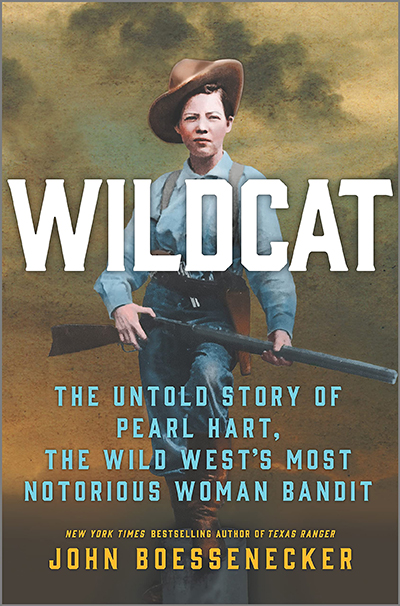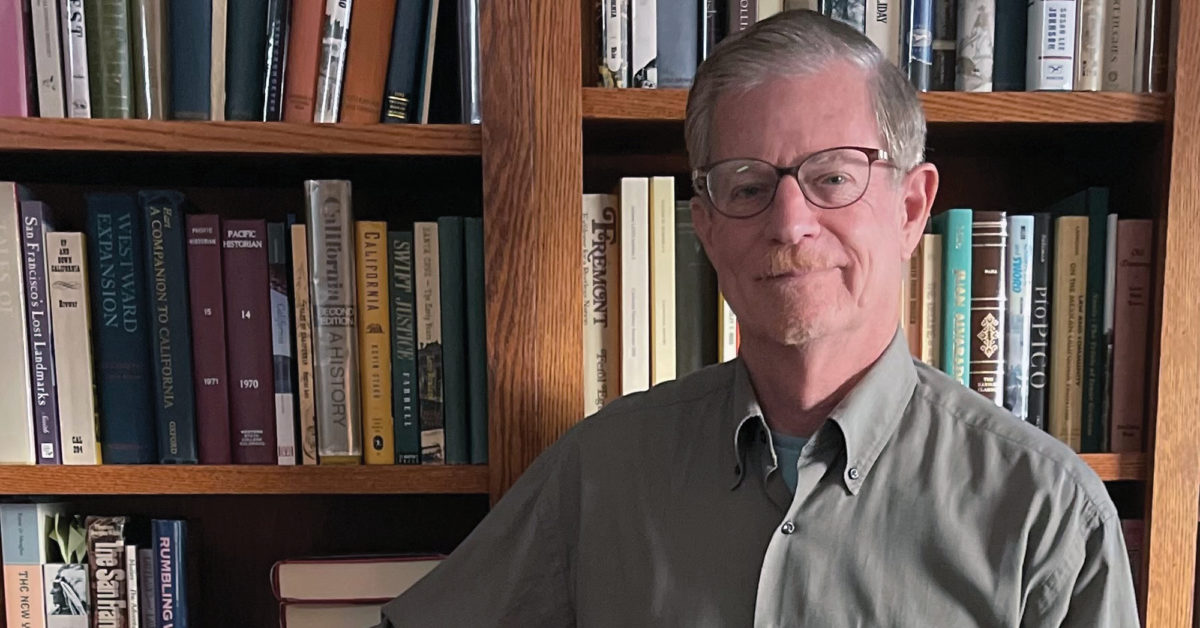John Boessenecker, a San Francisco trial lawyer and former police officer, has also become one of the leading historians on crime, outlaws and lawmen of the Old West. A recipient of both a Spur Award from Western Writers of America and a best book award from Westerners International, Boessenecker recently spoke with Wild West about his latest book, Wildcat: The Untold Story of Pearl Hart, the Wild West’s Most Notorious Woman Bandit.
What intrigued you about Lillie Naomi Davy (alias “Pearl Hart”)?
I have always been fascinated by her, ever since I read the book Tombstone’s Yesterday, by Lorenzo D. Walters, when I was a teenager. As I became older and more sophisticated as a researcher, I realized much of what had been written about her was hogwash.
How did her background differ from those of the male outlaws you’ve profiled?
Pearl was raised in poverty in Canada, the daughter of a monster who almost certainly abused his daughters sexually. She was very independent and strong-willed, but she lived in an era in which women did not have the same freedom and opportunities as men. She and her sisters used their good looks, turning to prostitution to escape their unhappy girlhoods. Many women in that era had little education and no job skills, leaving prostitution the only way to achieve independence.

How did she acquire her alias?
Lillie Davy served a term in the Ontario Reformatory. On her release in 1890 she joined her 17-year-old sister, Katy, who was running a bordello in Buffalo, N.Y. At that time one of the best-known madams in Buffalo was a woman named Pearl Hart, from whom Lillie adopted her alias.
What else did you learn about her sister Katy?
Katy Davy was gorgeous, glamorous and as independent as Pearl. She also started out as a prostitute, then became a pioneer parachutist in Texas, then a writer and actress. She even had roles in silent films before 1920 and wrote a science-fiction novel in 1940. She had countless lovers and broke her husband out of jail twice, in Oklahoma and in Texas.
How did Pearl get on with the rest of her family?
She loved her mother and siblings and hated her father, whom she always called a “worthless wretch.” She and her brothers and sisters, drawn together by childhood trauma, remained close throughout their lives.
How has the digitizing of newspapers helped you and other historians?
I spent months poring over digital newspaper archives looking for tidbits of information. Pearl and siblings tried hard to conceal their real names. Without being able to do word searches in digital newspapers, I would never have figured out the truth. The hardest part was learning her real name. That opened the floodgates.
How did you weed out fact from fiction?
Old West newspapers are often the only source one has. I always try to use firsthand accounts from the newspapers, or an account written by a local reporter. I try to confirm those with court records, memoirs, local histories and other records. The good thing is the papers often gave detailed coverage of crime news and included accounts by witnesses and law officers.
Was Pearl herself a reliable source?
No, but most of the falsehoods she told were about her background, as she was trying to protect her mother from the shame and notoriety she had achieved. While her accounts of her misadventures were generally true, her accounts of her childhood, family and marriages were false.
Did drugs take a toll on Pearl?
Pearl always said her husband Dan Bandman got her addicted to injecting morphine and smoking opium. Obviously she did it to offset the pain and humiliation of her life as a prostitute in Phoenix and Tucson in the 1890s. While serving her term in Yuma Territorial Prison for stage robbery, she kicked the habit and never used drugs again. But they clearly took a heavy toll on her health, for her sisters all lived into their 80s, while Pearl died in 1935 at age 64.
And prostitution?
Prostitution was her principal livelihood from her early teenage years in the 1880s until she landed in Yuma in 1899. After her release there is no evidence she ever returned to it.
And perhaps poor choices in men?
Her choices in men were beyond bad. Her first husband, Bandman, was a drug-addicted piano player who regularly beat her. Her second husband, Earl Lighthawk, was a mentally unstable actor and con man. However, they had a daughter, Millie, born in 1906, and she grew up to be a respectable woman in Los Angeles, married to a former U.S. Navy submariner.
Pearl refused to be constrained. She broke free from those constraints and lived life on her own terms. She made a lot of bad choices, but her life story almost defies belief
Why do we remember Pearl Hart?
In an era when women were subservient to men, when they lived at home, performed all domestic work and raised children, Pearl refused to be constrained. She broke free from those constraints and lived life on her own terms. She made a lot of bad choices, but her life story almost defies belief.
What prompted you to write about figures on both sides of the law in the American West?
As a boy I loved watching Westerns on TV, and when I turned 14, I became determined to learn about the true West, the good guys and the bad guys. I especially liked stories that had not been told before, which led me to more than 50 years of research and writing.
What’s better, writing about lawmen or outlaws?
Both are equally fascinating and equally hard to research. Few lawmen kept diaries, so you have to track down the details of their exploits in newspapers and court records. The same is true of outlaws. Most, like Pearl Hart, used aliases and tried to cover their tracks, which makes researching them more than difficult.
When do you know you have enough material for a book?
I have file cabinets jammed with materials on hundreds of Old West characters, plus some of my historian pals have passed on, and I inherited their files. I try to make sure I have enough material for a 200-page narrative at a minimum, and then I use my files as a starting place to dig up “new” information and compete the story. In the end, if I don’t have enough for a book, I’ll do a magazine article or two instead.
Final thoughts on Hart?
The lesson of her life is that as a society and as a nation we need to protect, nurture and educate our children so they don’t end up like Pearl Hart and her siblings. Today they would be placed in a foster home and given advantages that were unknown in the 1870s.
What’s next for you?
I’m finishing up a full-length biography of Charles E. Boles, better known as “Black Bart,” the Old West’s most notorious stage robber.






